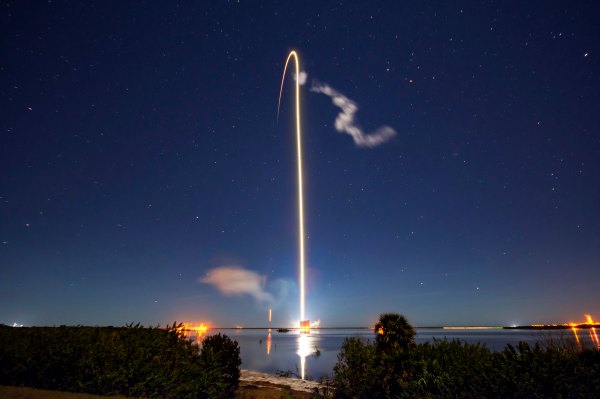
Welcome back for the first Max Q of 2020! As should be expected, the holiday and New Year’s weeks didn’t produce all that much news in the space industry — but that changed fast as the decade got underway last week.
2020 promises to be a huge year for commercial space and private space technology companies, and we got a taste of that over the course of the past seven days, with news and announcements from SpaceX, Blue Origin and Virgin Galactic.
SpaceX’s Starlink Mission from May 2019
SpaceX launched another batch of 60 satellites for its Starlink constellation, which will eventually provide global broadband internet coverage, if all goes to plan. This means SpaceX has now launched over 180 satellites for Starlink, across three separate batch launches (plus one smaller group launched as an early technology test).
All told, SpaceX wants to eventually expand this constellation to include many thousands of satellites — but with this latest launch it’s already the largest private satellite operator in the world by volume.
Blue Origin has opened a new headquarters and research and development facility in Kent, Wash. — nearby sister company Amazon’s main base of operations. The new HQ is a sprawling, 230,000-square-foot facility that plays host to around 1,500 employees, and it should be a very busy place, given how much the Bezos -founded space company hopes to achieve this year.
 SpaceX has a green light for the crucial in-flight abort test for Crew Dragon, its commercial astronaut spacecraft. This is one of the final steps required by partner NASA before the agency will allow SpaceX to put actual people on board for test and then official mission flights. The date could still change, but at this point it’s looking pretty solid.
SpaceX has a green light for the crucial in-flight abort test for Crew Dragon, its commercial astronaut spacecraft. This is one of the final steps required by partner NASA before the agency will allow SpaceX to put actual people on board for test and then official mission flights. The date could still change, but at this point it’s looking pretty solid.
Virgin Galactic has achieved a key milestone in the construction of its second commercial space tourism vehicle, called “Weight on Wheels.” Effectively, this means the second SpaceShipTwo can now support its own weight, which means it’s about 80% of the way to final full assembly. Galactic is also working on a third, so its fleet could be thrice as big by end of year.
SpaceX has recovered the Dragon cargo capsule that it used for its 19th commercial resupply mission for the International Space Station. This Dragon has done this round trip twice before, and this time comes back loaded as usual with a number of experiments and scientific materials from research done on the orbiting science platform.
Space startup Satellogic is adding to its existing fleet two more state-of-the-art Earth observation satellites, equipped with both multispectral and hyperspectral imaging arrays. This will expand its capabilities, which include offering high and low-resolution imaging to customers all over the world.
NASA’s TESS satellite is designed to find Earth-like planets outside of our solar system, and it just found another that may be habitable. While we won’t get a chance to get an actual closer look at the new exoplanet anytime soon, scientists are working on computer models to predict what the surface of the planet could look like.
Virgin Galactic Fleet
Space exploration is definitely having a moment — and it could be its biggest yet since Apollo, or the Space Shuttle program. This year promises to see the first human flights of both NASA’s commercial crew astronaut program and the space tourism projects of Virgin Galactic and Blue Origin. Check out what this means to the startup world with this breakdown of the industry’s biggest opportunities. (Extra Crunch subscription required.)




